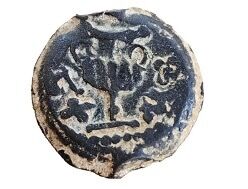Archaeologists have uncovered a 300-meter (984-foot) portion of an ancient Second Temple Period aqueduct in the south Jerusalem neighborhood of Givat HaMatos, the Israel Antiquities Authority (iaa) announced on Monday. The ruins were discovered during archaeological excavations of the area prior to the construction of a school.
The dual-conduit watercourse, consisting of an upper and lower level, transported water 21 kilometers (12 miles) from outside Bethlehem into Jerusalem. The Upper-Level Aqueduct channeled water to the upper city, where the affluent members of society lived and where the royal palaces were located (today’s Jewish and Armenian Quarters); the Low-Level Aqueduct brought water to the Temple Mount. According to the iaa, the newly uncovered section is the longest portion of the Upper-Level Aqueduct that has been discovered.
The newly discovered portion is made up of three distinct parts, two of which were constructed during the Second Temple Period; the third was constructed by the Roman Tenth Legion, who used the aqueduct for decades after destroying Jerusalem and the second temple in 70 c.e. The excavation, led by Dr. Ofer Sion and Rotem Cohen, uncovered 25 coins within the plaster of the aqueduct, including one minted at the time of the First Jewish-Roman War.

Sion and Cohen describe the aqueducts as being “among the largest and most complex water systems in the land of Israel—and indeed, in the ancient world.”
“The Jerusalem aqueducts tell the story of the city,” iaa director Eli Eskosido said. “They testify to the glory days of the second temple, the destruction of the city, and the building of it after the destruction of the temple ….”
Jerusalem Mayor Moshe Lion said that the Givat HaMatos development plans would be adjusted to preserve and eventually open the site to the public.
